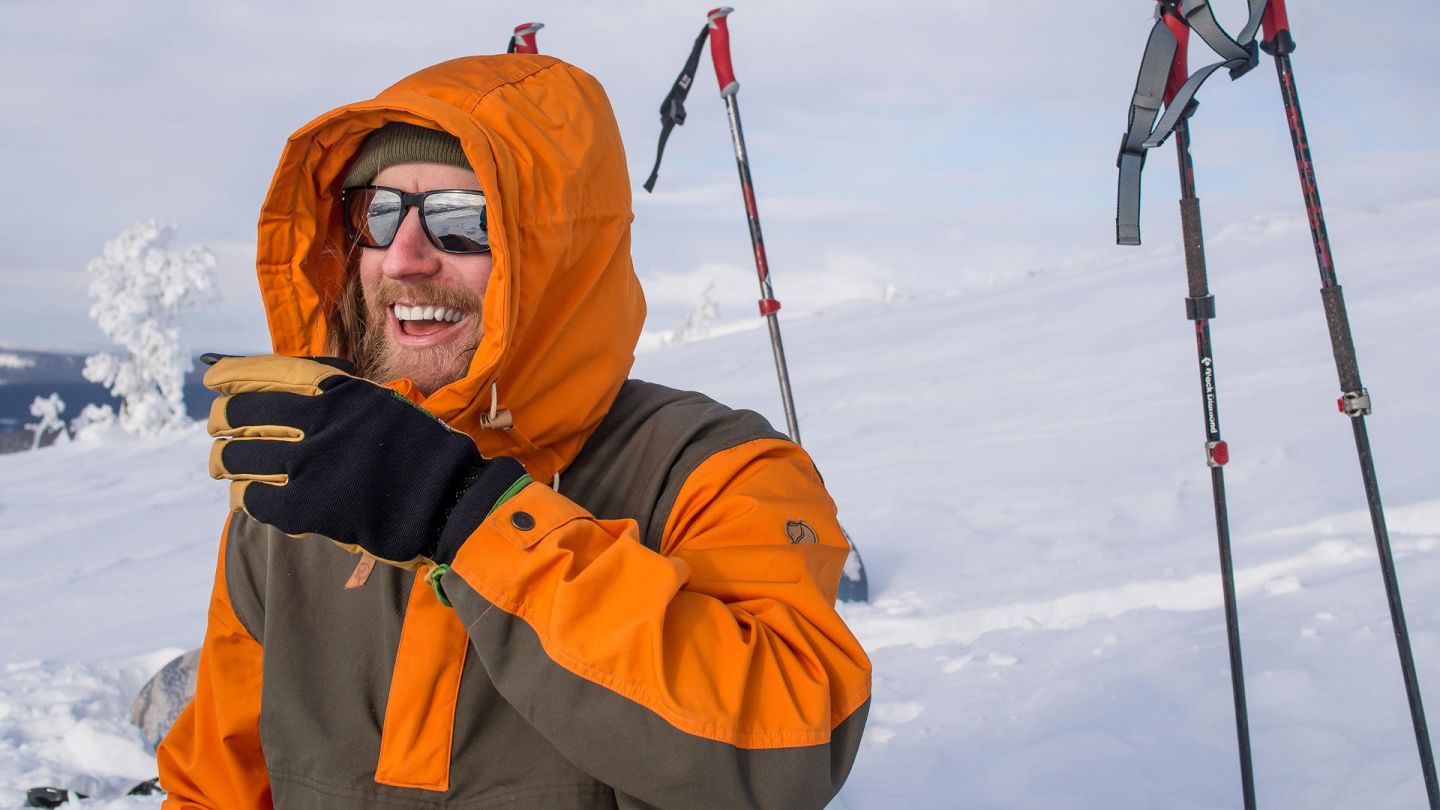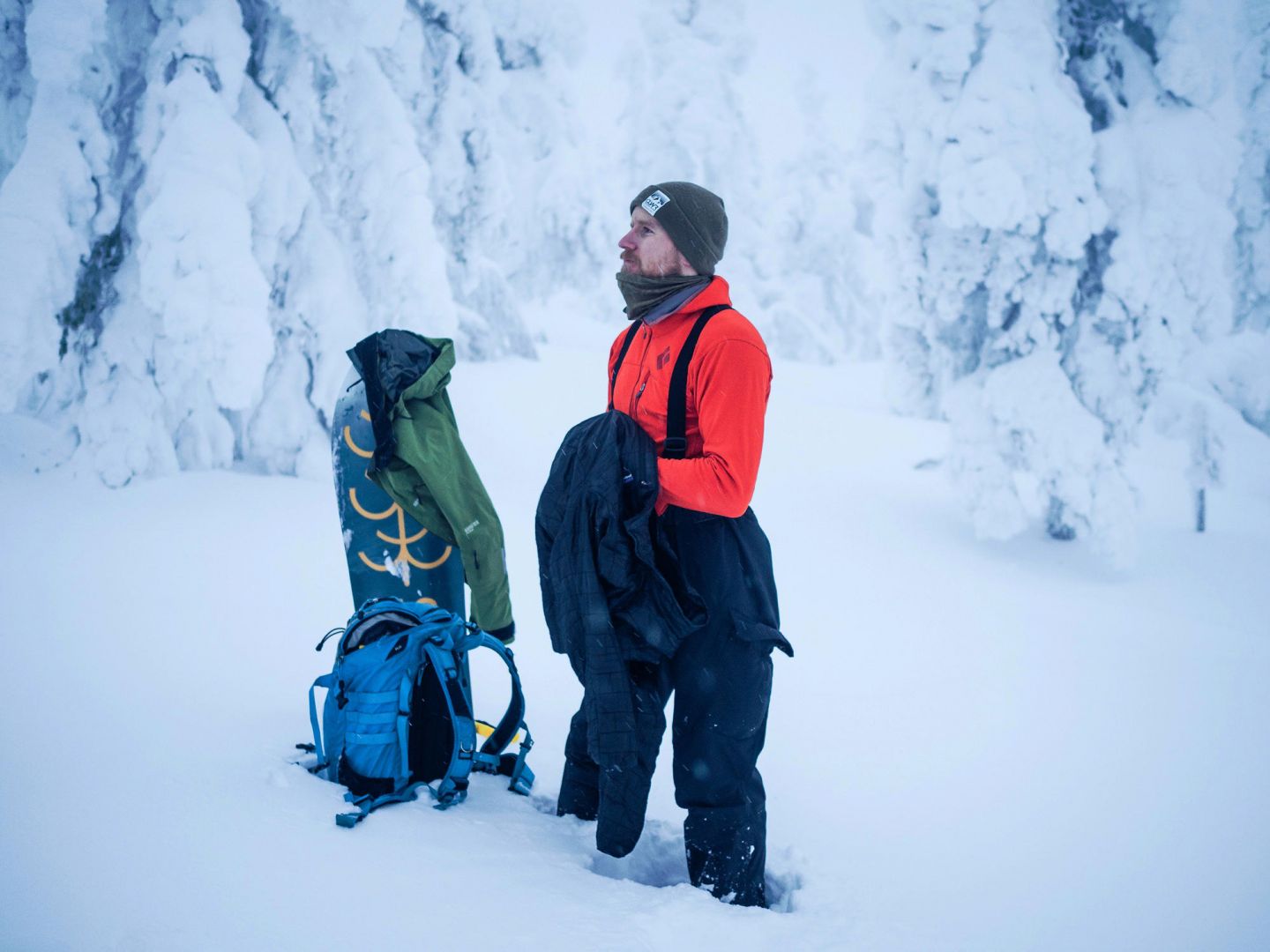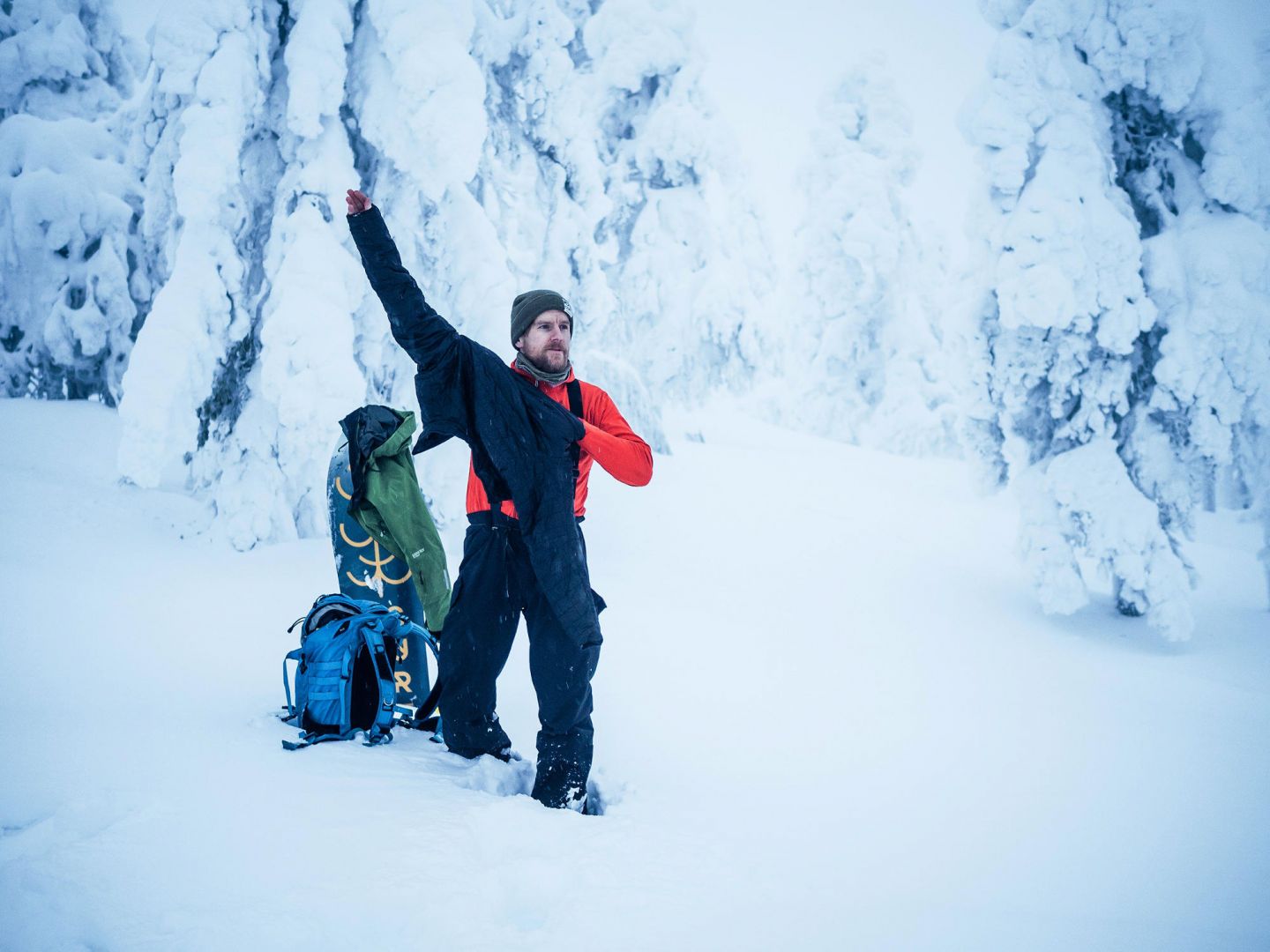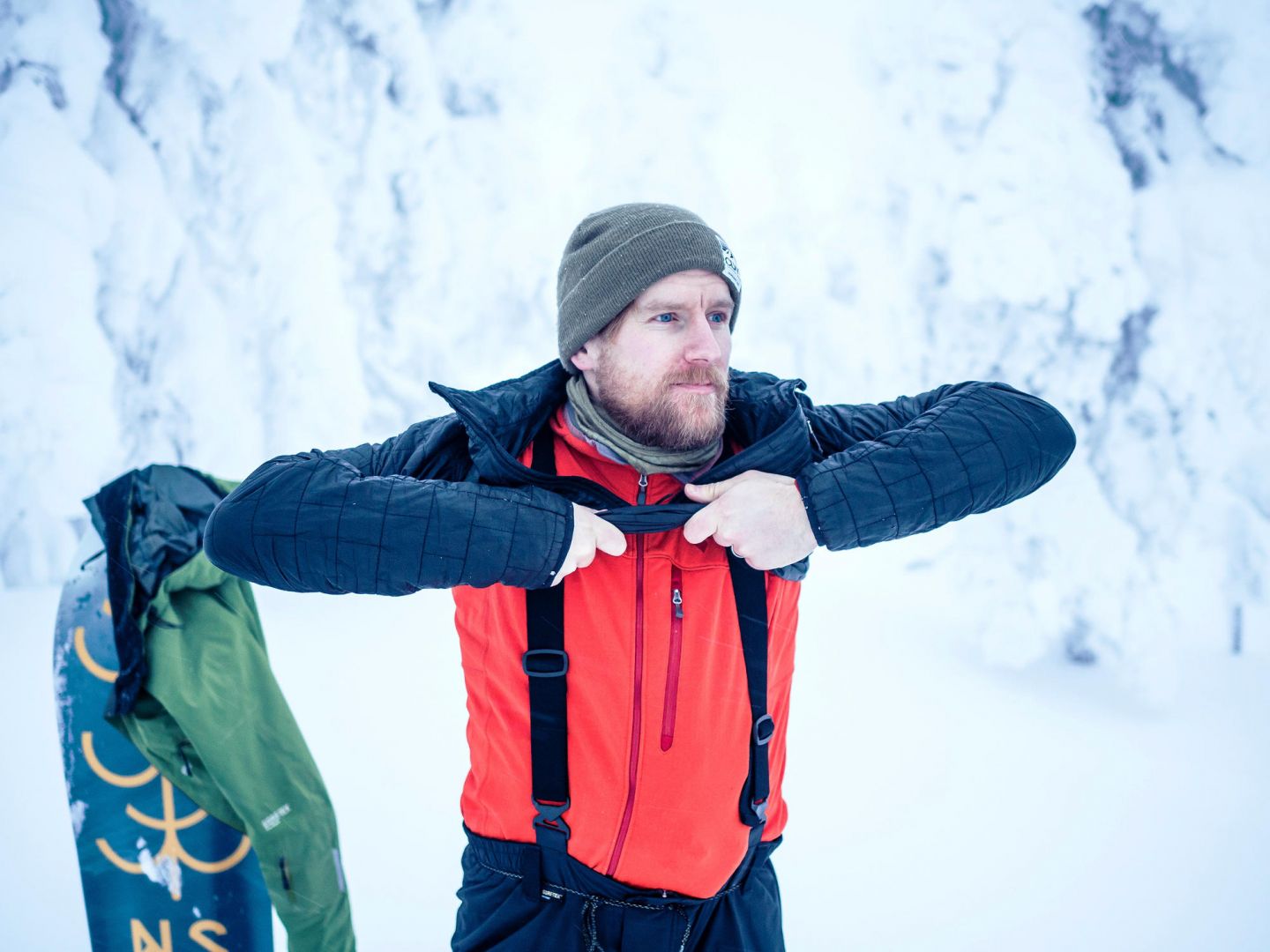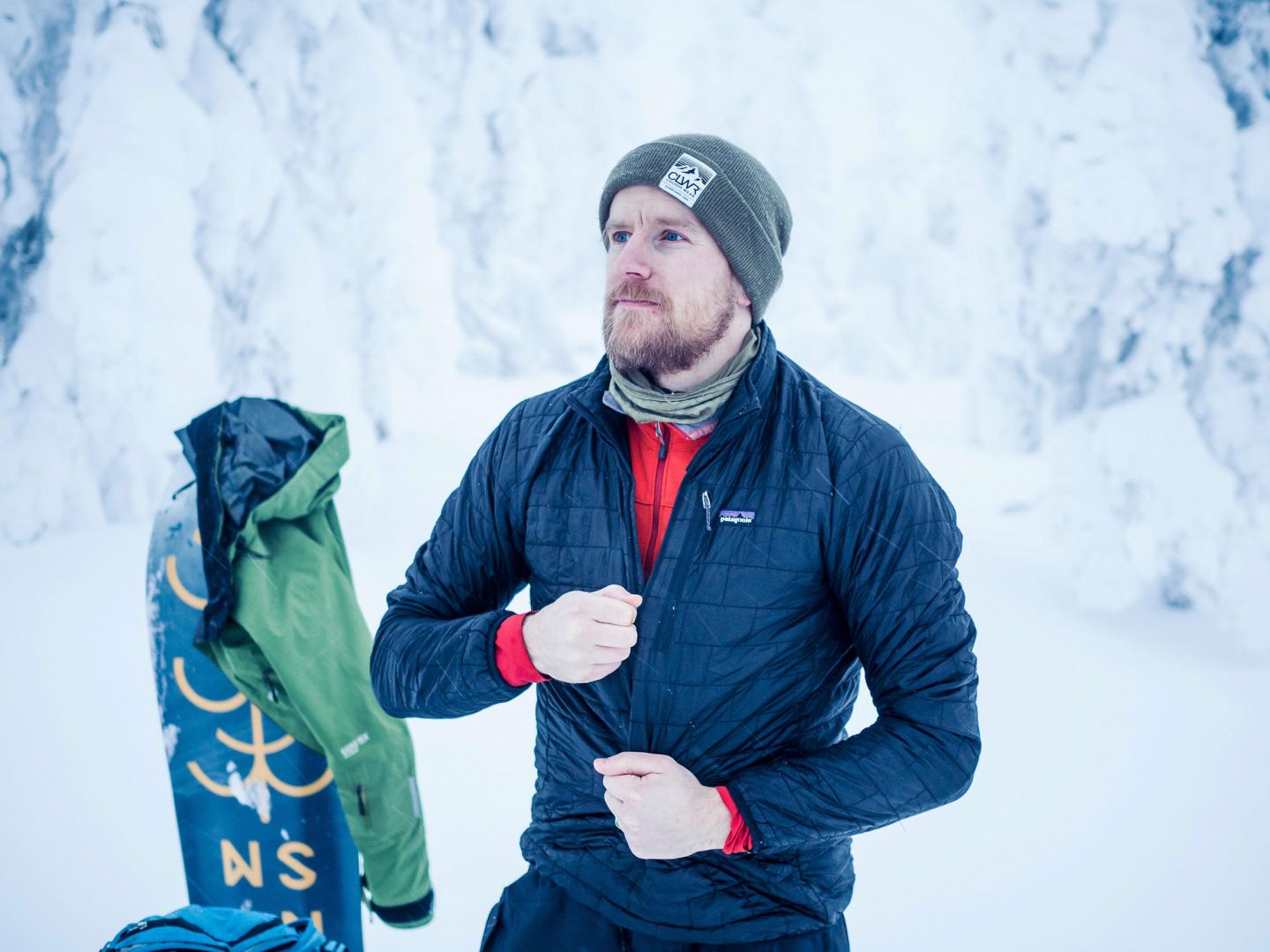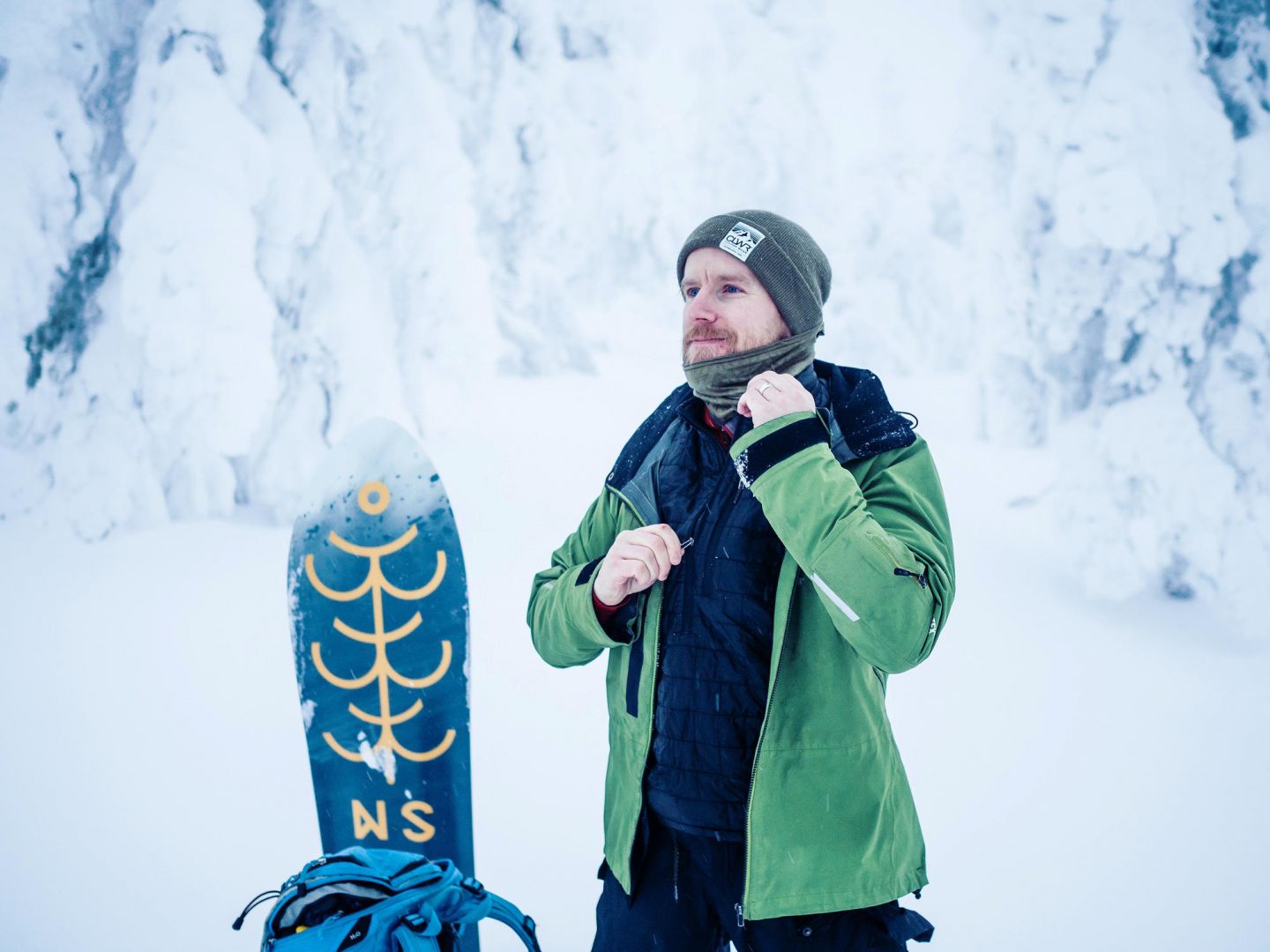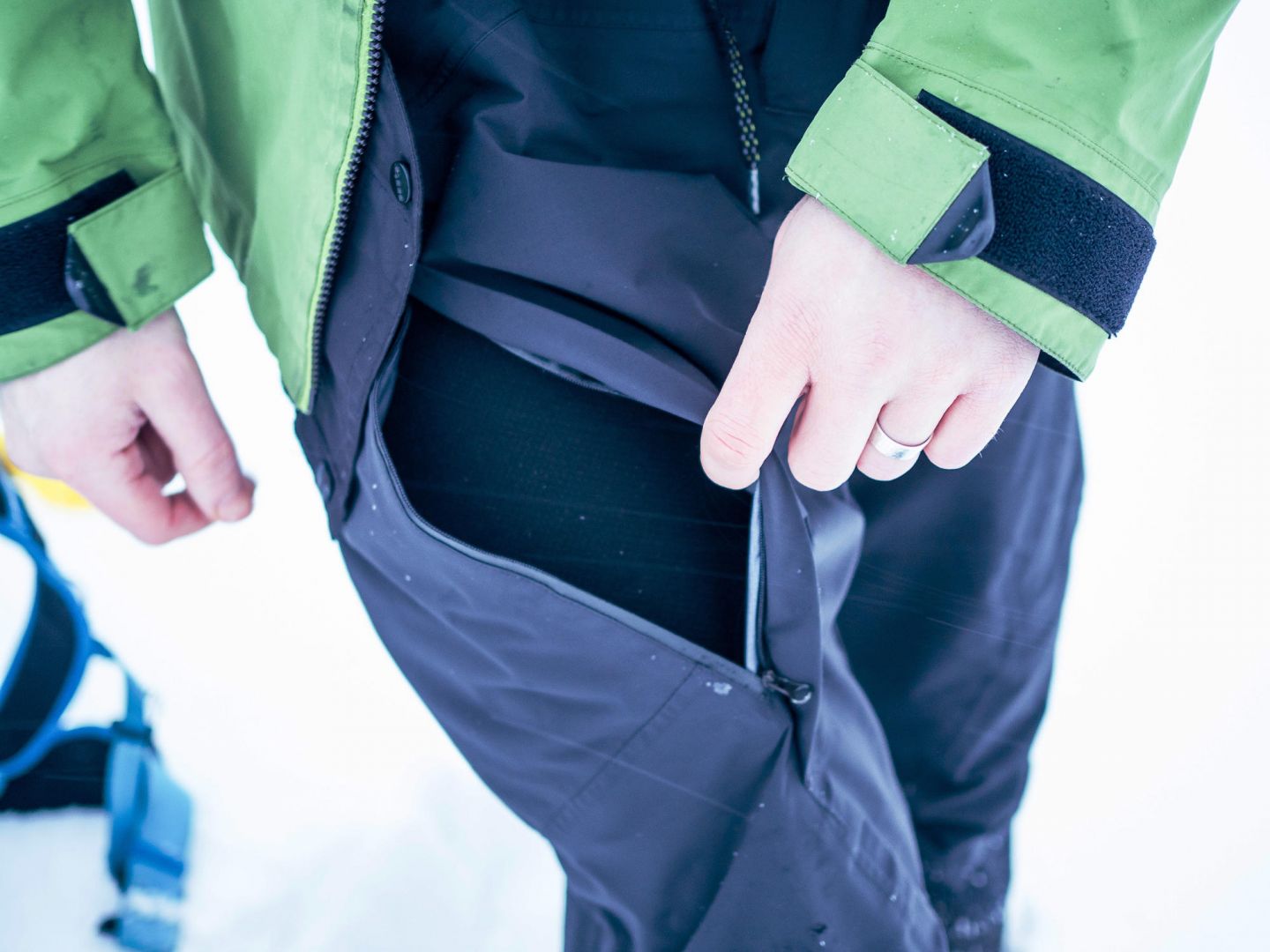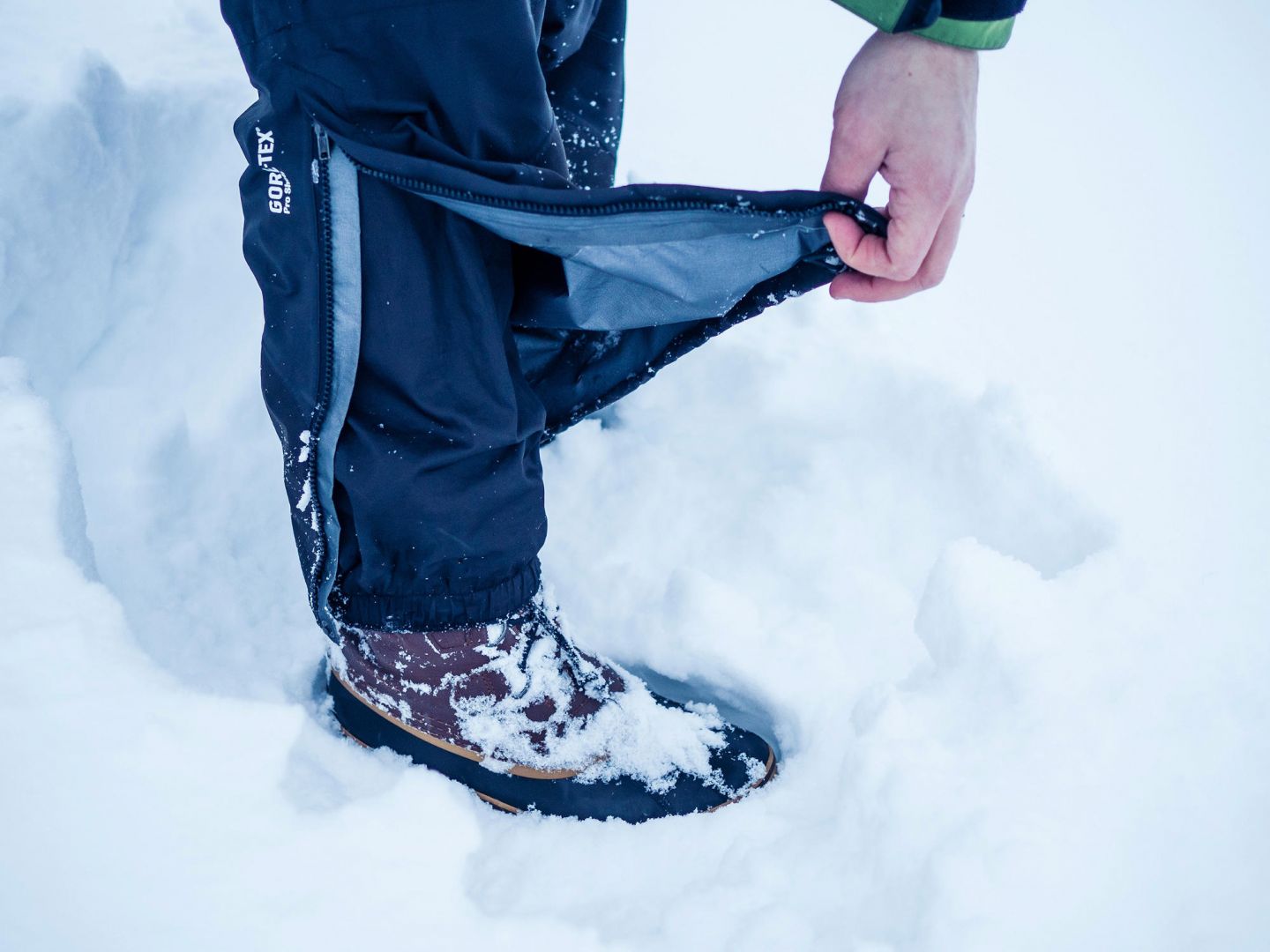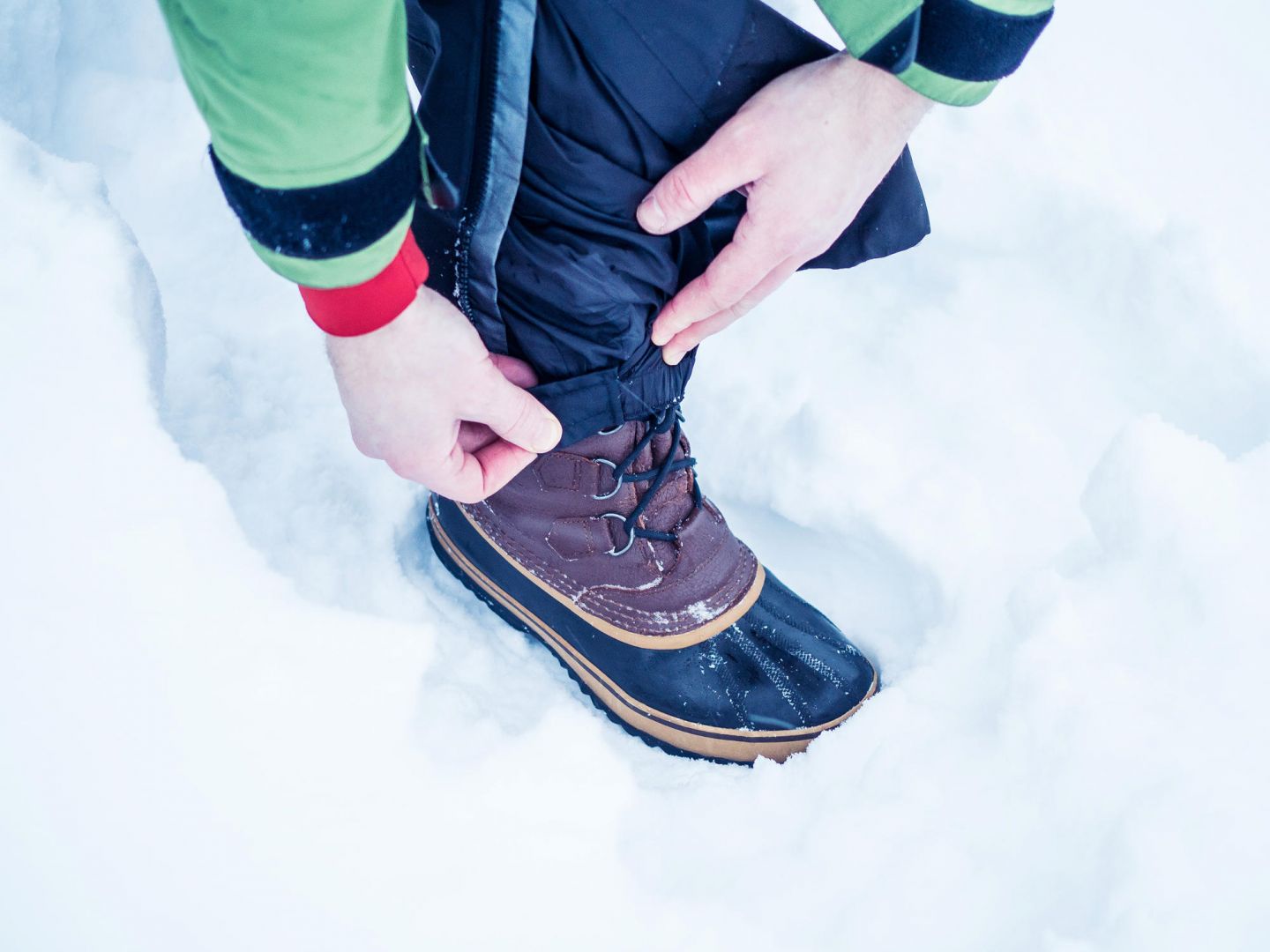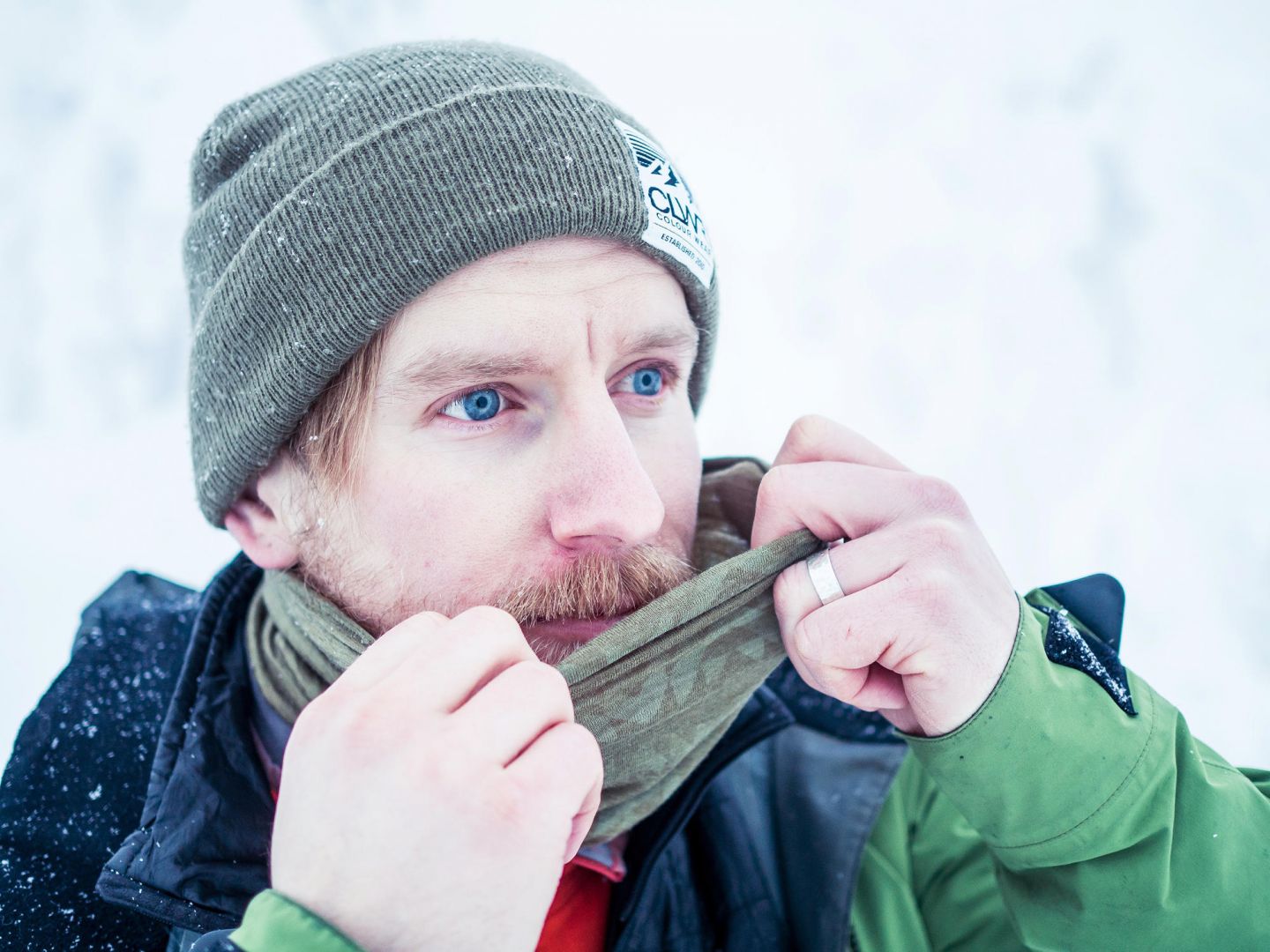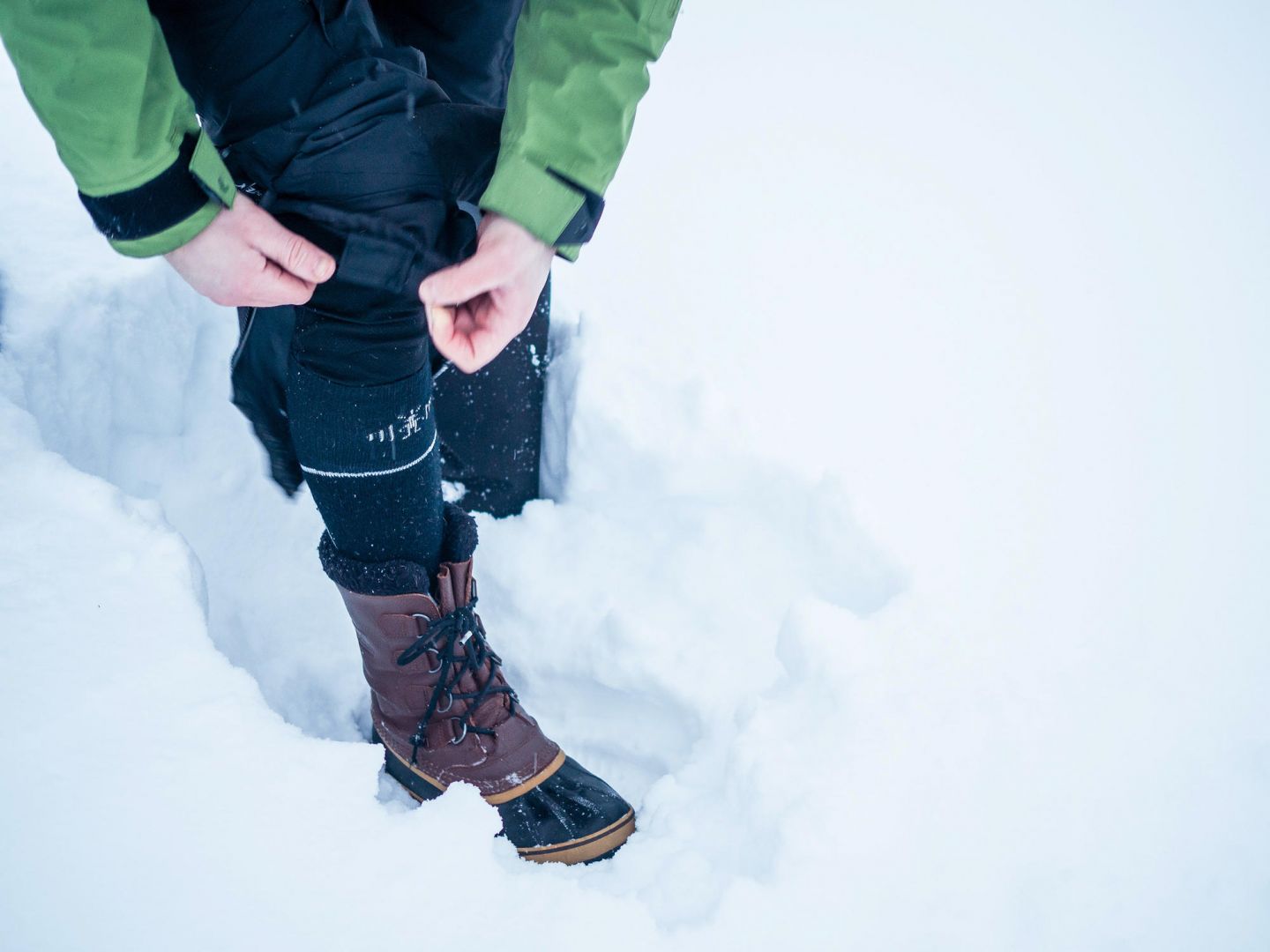Bad weather doesn’t exist if you dress accordingly and properly. And nothing ruins fun like getting cold, wet or, in the worst case scenario, both.
The wonderland that is Lapland in winter is best experienced with proper cold weather gear – so you don’t have to rush inside to defrost your fingers when, say, an aurora is exploding above Lake Kemijärvi. Let us guide you through the basics of keeping warm … and keeping a smile on your face, no matter the temperature.
Learn from the locals
It’s vital for both your comfort and health to dress accordingly. Thick overalls are good if you’re riding a snowmobile through the forests of Salla or just standing still in downtown Ranua. But if your plans include hiking, skiing or sweating, we recommend layers so you can remove or add layers of clothing according to the activity and possibly changing weather.
In winter, you should consider four layers for your top and bottom: 1) base, 2) mid, 3) insulation and 4) outer layer. Proper footwear, gloves and headwear are perhaps even more important. Don’t worry; we’ll cover all of these. Let’s start with materials.
Bringing a backpack is indeed a wise move, since you can carry an extra set of gloves, hat and an extra insulation layer just in case the temperature drops, or during breaks when you stay still.
Wool is the winner
We can learn a lot from the animals living in these cold, sometimes even harsh conditions throughout the year. Take how the reindeer, for example, stays warm. They grow a thick winter coat that traps air between the fur. Air that stays still works as great insulation. Looser clothing, puffy jackets and slightly larger footwear with extra socks are all good choices in the arctic winter.
There is a chance of getting wet in the cold too: you might sweat and snow might melt. This calls for moisture wicking materials that keep you warm even when damp. First, avoid cotton. Cotton is not only uncomfortable, but also potentially dangerous in freezing temperatures, especially against the skin. Cotton will get wet, stay wet and eventually make you cold. Try comparing wool and cotton yourself, and you’ll see the difference.
Merino wool is very much the perfect material for winter socks, underwear, first layer and your beanie too. Wool keeps you warm and transfers moisture away from the body. It works. Even when wet. Thin wool garments will work like a charm in warmer weather too. If you prefer non-animal products, synthetic performance materials that mimic the qualities of wool make a good substitute.
Layers upon layers
The basic idea of layering is that you can take off or put on layers when needed. Weather can change quickly. (In February, it can drop as low as -40 in the worst case.) Even if you plan perfectly, conditions can change, and periods of inactivity need to be considered. When you’re wrapped up in layers, you can adjust. Carry extra clothing, as well as water, snacks, headlamp, camera and other equipment in your handy backpack. It’s worth investing in a good backpack; they can last decades.
The base layer touches your skin. Start with thick socks, long underpants and a long sleeve shirt. Pick materials that keep you warm and your skin dry. Synthetic performance materials work, but try merino wool. It doesn’t tickle or itch like regular wool does for some people. For the coldest of days, you could even wear two sets. A thin one next to skin, and a thicker on top.
The mid-layer keeps you warm. Thick polyester or woolen pants work great as a mid-layer on the coldest nights, or paired with thin outer pants without insulation. Wool pants don’t need to look unflattering. Many Finnish design brands make neat stuff from wool. What’s best, they’re super comfy to lounge in back at the cabin.
Your insulation layer should be a lightweight down or synthetic jacket that you can keep in your backpack and put on when you need extra warmth. A light jacket is a great item to always have with you, just in case. You could also wear it without a shell jacket. You don’t usually need a third layer for your lower body, but those who get cold easily can try, for example, down pants. Optionally, you can wear another set of your base layer under the mid-layer for a bit of extra warmth.
Your outer layer protects you from wind and moisture and has adjustable ventilation for active periods. Look for waterproof but breathable garments. A shell jacket or even a thicker insulated jacket with a wind- and waterproof shell will do. Pick pants and a jacket which have ventilation zippers, so you can open them up if you get too warm when hiking. A high collar and a hood in your outer jacket will protect you from the wind, so they are useful features to look for, too. On the coldest of days, or for breaks, you can even pair a light down jacket with a thicker one.
Protect the critical parts
Nothing puts a damper on a good time like frozen toes. Make sure you wear a good pair of boots, with higher bootlegs and thick, warm soles. If you choose a pair that is slightly bigger than normal, you can also wear a pair of woolen socks to keep warm. Many winter boots are 2-3 sizes bigger, because nothing ruins a trip like cold feet. Pay attention to your boots. Your pants should have snow locks to keep snow from getting inside your boots. Pull them over your bootleg. Good models have a clip to secure the snow locks to your boots. You’ll need them when plowing through the deep snows around the Arctic Circle.
Some people use separate boot- or hand-warmers too. If you are easily cold, you should ask outdoor stores or your guides for more info.
Mittens keep your hands warmer than gloves, as there is more air surrounding your fingers. If you plan on operating a camera, you might want to wear thinner gloves underneath for fidgeting with the controls. You’ll quickly freeze your fingers if you need to do stuff barehanded.
Pro-tip: always pack extra gloves and a hat if you are moving around. One lighter set for active time. One heavier set for breaks and staying still.
Pick a hat that protects your ears, and consider a balaclava and scarf to protect your neck and face. If you are doing sports like snowmobiling, skiing or snowboarding, you should wear protective gear like a helmet, which will also keep your head warmer. Ski goggles are a smart choice for downhill sports and tobogganing too!
By following these tips, you’ll be ready and prepared to take on any winter adventure in Lapland with confidence. Last, but not least: remember to take food and water with you on adventures. Your body needs energy to stay warm. Finally, the perfectly justified reason to pack a chocolate bar or two!



